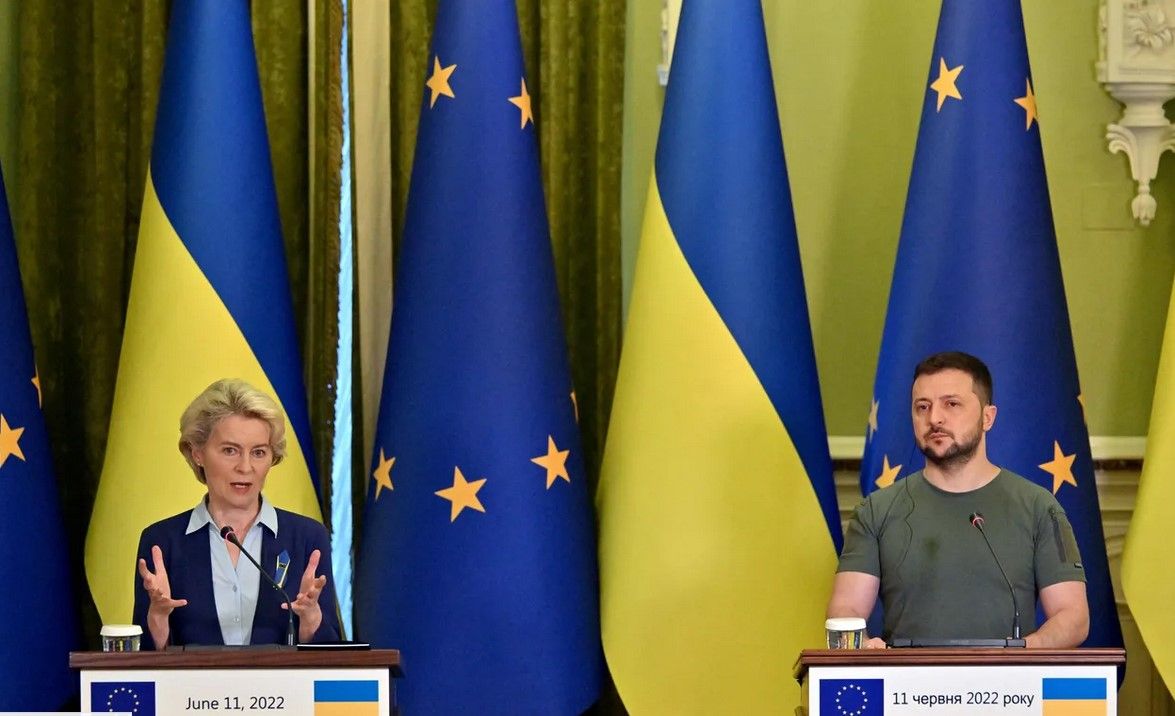During an informal meeting in Versailles on 11 March, EU leaders acknowledged that “Ukraine belongs to our European family” and supported the European integration path of Ukraine. Ukraine is at the early stage of joining the EU, and now expects the opinion of the European Commission on EU candidate status. However, while member states are discussing how fast/slow Ukraine’s accession to the European Union can be, candidate status is the “engine” that can significantly accelerate Ukraine’s reforms and, consequently, help European integration of the war-torn country.
Since the conclusion of the Association Agreement with the EU in 2014, Ukraine demonstrated tangible progress with implementation of European legislation. The Ukrainian Centre for European Policy estimates that 49% of Ukraine’s commitments under the Association Agreement are already fulfilled.
Due to execution of the EU-UA Association Agreement, Ukraine has carried out a number of major reforms, which already changed the country in a number of sectors, including:
· Electricity and gas markets reform, synchronization of Ukrainian electrical power system with ENTSO-E;
· Implementation of a transparent public procurement system;
· Push in development of transplantology;
· Decentralization and enhancement of capacity of the local authorities;
· Market surveillance reform and implementation of EU technical regulations;
· Corporate governance transformation;
· Implementation of EU legislation to accede to the common transit procedure (NCTS).
These reforms have yielded a significant impact on everyday life. The Prozorro procurement e-system was integrated with the EU public procurement IT system TED (Tenders Electronic Daily). This allowed European businesses to participate in public procurements in Ukraine and vice versa.
Reforms in the energy sector enabled synchronization of the Ukrainian electric power system with that of the EU, having passed all the crash tests during the war. That is why ENTSO-E was able to connect with the Ukrainian energy system.
In 2020, the Ukrainian Transplant Coordination Centre was launched. This allowed to coordinate and supervise local healthcare facilities engaged in transplantation. As well, a nation wide IT system in the transplantation area has been developed. This reform is indeed saving lives: in 2019 there were 78 transplant surgeries, in 2021 – 313 organ transplants were performed.
The lack of EU membership perspective in the Association Agreement has hampered other important reforms. The question of why to implement complex European acts arose every time when it came to unpopular reforms among the population or business. In the EU, it was referred to as a lack of political will.
Another issue that has arisen is the fact that the Association Agreement is already somewhat outdated for Ukraine. In some sectors, it does not fully meet the challenges Ukraine and the EU are currently facing. For example, the foreign and security policy sector does envisage how to deal with the threats faced by the EU and Ukraine in connection with Russia’s military aggression. The Association Agreement also does not provide for how to respond to the various challenges of hybrid aggression in cyberspace, in the energy market, and in the event of humanitarian crises.
In other sectors, Ukraine has already come a long way in its cooperation with the EU compared to the requirements of the Agreement. For example, in the sector of digital, innovations and reforms in Ukraine are implemented almost simultaneously with the EU countries, although these reforms are not required by the Association Agreement.
Realizing that the Association Agreement is no longer up to date, Ukraine was looking for ways to update cooperation with the EU back before the war. For the most part, various annexes to the Association Agreement were updated, which contained a list of European legislation that Ukraine had committed to implementing. But this approach was like running in a circle: while the negotiation process on updating the annexes was going on, European legislation was changing and the annexes had to be updated again.
Therefore, although Ukraine has made significant progress in implementing the Association Agreement, the Agreement per se has not become a powerful stimulus for reform in the country. EU candidate status for Ukraine would be not only an “act of moral support” from the EU but would also set a clear vision of where to move in Ukraine-EU relations further.
The EU accession process goes on for years and the scope for reducing this procedure is very limited. Ukraine still has a long way to go to become a full member of the EU. However, candidate status is not only about future participation in the European family, but also an extremely important guideline that will help Ukraine and its citizens win the war and embark on the post-war reform process.
Snizhana Diachenko, Oleksandra Bulana




